Mariana Velez - Charcot-Marie-Tooth disease (Argentina) Updated on October 29, 2012
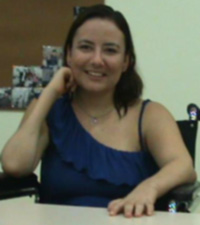 Name: Mariana Velez
Name: Mariana Velez
Sex: Female
Country: Argentina
Age: 32
Diagnoses: 1. Charcot-Marie-Tooth disease 2. Chronic otitis media
Admission Date: July 3, 2012
Days Admitted to Hospital: 28
When Mariana was 3 years old, she developed weakness in both legs causing an unusual walking posture. When she was 6 years old, weakness developed in the arms as well. There was also muscle atrophy in both hands and forearms. As a result she had difficulty grasping things. After physical rehabilitation training at the hospital there was some improvement in the strength of the arms and legs but the symptoms eventually progressed. Test results revealed PMP deletion. Mariana was diagnosed with Charcot-Marie-Tooth disease. With some assistance, she was able to walk. She could take care of herself and go to work but at the age of 31 she developed a severe upper respiratory tract infection and had to stay in bed for 5 months. Soon after this, the muscle atrophy in the legs became more severe which made it very difficult for Mariana to walk. When Mariana was admitted to our medical center, the muscle atrophy in all four limbs was obvious. She was unable to walk and the functioning of both hands was poor.
Admission PE:
Bp: 118/72mmHg; Hr: 83/min. Temperature: 36.2 degrees. Mariana Velez's nutrition was normal. The skin and mucosa was normal with no hemorrhaging spots or yellow stains. The heart sounds were strong and the rhythm was regular. There was no obvious murmur in the valve area. The abdomen was distended and soft. There was no pressing pain or rebound tenderness. The liver and spleen were palpable under the ribs. There was muscle atrophy in the external muscle group of the forearms, the thenar and intermetacarpal muscles of both hands, the calf muscles of both lower limbs and the bilateral lower 1/3 segment of the thighs. All the fingers were flexed. All the fingers and both feet were short. The movements of both wrist joints were limited. The arches of both feet were flatter than normal. The skin temperature of the extremities of all four limbs was poor. There was no edema in the lower limbs.
Nervous System Examination:
Mariana Velez was alert and her speech was clear. The orientation, calculation abilities and memory were normal. Both pupils were equal in size and the diameter of both pupils was 3.0mms. The left pupil was sensitive to light stimuli, and both eyeballs could move freely. The tongue was in the center of the oral cavity and the teeth were shown without deflection. The bilateral soft palate could be raised normally. The pharyngeal reflex was normal. The grasping power of the left hand was level 2; the grasping power of the right hand was level 2-. The muscle strength of both forearms and upper arms was level 5-. The muscle strength of both lower limbs' proximal-end was level 2. The muscle strength of both lower limbs' distal end was level 0-1. Both feet were unable to bend. The muscle tone of all four limbs was slightly low. The tendon reflexes of both upper limbs were normal. The tendon reflexes of both lower limbs were not elicited. The bilateral abdominal reflexes were elicited normally. The bilateral palm jaw reflex was negative. The bilateral Hoffmann's sign and Rossolimo's sign were negative. The bilateral Babinski sign was negative. The deep sensation and shallow sensation in all four limbs' extremities and below the ankles were decreased slightly. The right limbs were more severe. The other sensations were normal through coarse measurement. The patient was unable to finish the finger-to-nose test, the rapid rotation test, the heel-knee-shin test or the digit opposition test.
Treatment:
We gave Mariana Velez a complete examination and she had repeated infections in the outer canal of both ears. She was diagnosed with
1. Charcot-Marie-Tooth disease 2. Chronic otitis media. Then the patient received treatment to improve the blood circulation in order to increase the blood supply and nourish the damaged neurons. She also received treatment to promote the neural repair, nourish the muscles and anti-infection medication. This was combined with physical rehabilitation training.
Post-treatment:
The patient's mental state had improved. At present, the patient can straighten all the fingers. The muscle strength of both hands' distal-end has increased from before. The holding power of both hands has reached level 2+ or level 3-. Both wrists have more flexible movement than before. Horizontal position: both lower limbs can be lifted off the surface of the bed. The proximal-end muscle strength has increased and reached level 3. The distal-end muscle strength reached level 2. Both feet have slight bending action. There has been a small increase in the volume of the muscles in both lower limbs. The patient is able to care for herself much better now. She can take off her clothes by herself. She can also wash and comb her hair and wash her face. She can stand for 1-5 minutes with the assistance from her family members.
Mariana and her family members are very happy with the significant progress made during the 28 days of treatment and expressed their thanks to our staff.
See Mariana's vedio:
(Download the Windows Media Player Firefox Plugin if you are using Firefox browser.
To know more,Please read Using the Windows Media Player plugin with Firefox.)
Mariana Velez's makes a lot of progress and she has interviews with news media, she emailed to us. See the follow links:
this was today!!!!!!: http://elsolonline.com/noticias/view/144573/mariana-velez-logro-implantarse-celulas-madres-en-china-y-volvio-a-caminar
before...
http://www.youtube.com/watch?v=Cf4TxOuWOiY&feature=share
http://www.youtube.com/watch?v=BuAFMJflDfo&feature=share
http://elsolonline.com/noticias/view/132922/-solo-necesito-una-oportunidad-vivir-
http://www.youtube.com/watch?v=BuAFMJflDfo&feature=share
http://www.diariouno.com.ar/edimpresa/2012/06/04/nota302041.html
http://www.mdzol.com/mdz/nota/390372-mariana-velez-dice-si-a-la-vida-y-necesita-de-tu-ayuda/
http://www.diariouno.com.ar/edimpresa/2012/06/04/nota302041.html
2012-09-12
Hello, how are you I am writing to tell you that I had imrpovements this week in strong in my excersices, I have to do with more resistence, and I can do more quantity.
The most important thing is I can move my feet down, more visible and stronger, both of them. I am walking with assitance.
Thank you very much
Best regards,
Mariana
2012-10-02
Good morning Dr Peng , I want to write to ask you that I am going to swim, I can do it, but I want to know if I have to do it slowly, medium or strong.
Thank you very much,
best regards
Mariana
2012-10-28
At present, Mariana is able to ride a bike again.
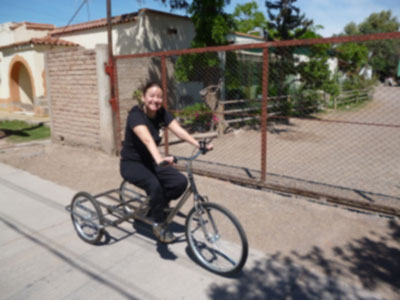
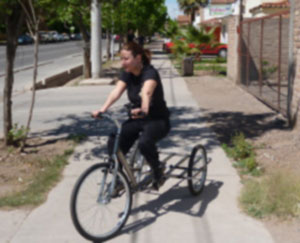
Date: 2013-07-22
Subject: 1 year
Dear Drs, How are you? I am fine, doing PT everyday and in good health. Allready pass 1 year of my treatment there, I am no walking too much but still have the strong and movements that I got from China.
I want to know if I can back for more improvements, in my feet for example, balance, but most important walk by myself and improve my immune system, do you can do that?
If those things are possible, I will love to have news soon
best regards
Mariana
The second round treatment: 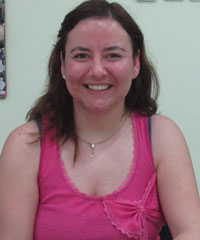
Name: Mariana Velez
Sex:Female
Country: Argentina
Age:34 years
Diagnoses: 1. Charcot-Marie-Tooth disease 2. Upper respiratory tract infection
Date: September 8, 2014
Days Admitted to Hospital: 19 days
Before treatment:
The patient suffered from weakness of both lower limbs' far-end without any inducement. She also suffered from walking abnormality. The walking was presented with waddling gait. The MRI of head showed no abnormalities. The patient received rehabilitation, but the disease progressed gradually. She suffered from weakness of both upper limbs. There was muscle atrophy in both hands and forearms. She had difficulty to grasp. She received gene test when she was 16 years old and the results showed PMP deficiency. She was diagnosed with Charcot-Marie-Tooth disease. She insisted on rehabilitation training from 3 years old to 25 years old. With assistance of appliance, she could walk by herself. She could take care of herself. She still went to work. The patient suffered from severe upper respiratory tract infection when she was 31 years old. She was kept in bed for 5 months. The muscle strength of both lower limbs was weak. The muscle atrophy was severe than before. The muscle atrophy extended to both lower limbs and bilateral thighs 1/3. She had difficulty to walk. She received treatment in our hospital for nerve regeneration. After treatment, the patient’s limbs’ strength was increased to level 1. She had a better ability to take care of herself. She insisted on taking oral medication and rehabilitation. The disease progressed slower than before, for further treatment, the patient came to our hospital again.
From the onset of disease, the patient had normal spirit. Her diet was good. The sleep quality was not good. There was no cough when she drink. She suffered from cough, congestion and pharyngalgia in recent days. The defecation and urine was normal. The patient had no genetic disorders.
Admission PE:
Bp: 109/65mmHg; Hr: 60/min. Temperature: 36 degrees. Br: 19/min. Mariana Velez's nutrition was normal. Her body type was normal. The skin and mucosa was normal with no hemorrhaging spots or yellow stains. She suffered from swelling of pharynx. There was no enlargement of both tonsils. The respiratory sounds of both lungs were rough, with no dry or moist rales. The heart sounds were strong and the rhythm was regular. There was no obvious murmur in the valve area. The abdomen was distended and soft. There was no pressing pain or rebound tenderness. The liver and spleen were not enlarged. There was muscle atrophy in the external and inner muscle group of both forearms, the thenar and intermetacarpal muscles of both hands, the calf muscles of both lower limbs and the bilateral lower 1/3 segment of the thighs. All the fingers and both feet were short. Right wrist joints had no movement. The movements of left wrist joints was limited. All the fingers needed great effort to bend. Both arches of foot was flat. There was no edema in the lower limbs.
Nervous System Examination:
Mariana Velez was alert and her speech was clear. Her spirit was good. The orientation, calculation abilities and memory were normal. Both pupils were equal in size and the diameter of both pupils was 3.0mms. Both pupil was sensitive to light stimuli, and both eyeballs could move freely. The forehead wrinkle pattern was symmetrical. The eyes could close strongly. The nasolabial sulcus was equal in depth. The tongue was in the center of the oral cavity and the teeth were shown without deflection. The bilateral soft palate could be raised normally. The pharyngeal reflex was normal. The grasping power of the left hand was at level 2-; the grasping power of the right hand was at level 1+. The muscle strength of all the fingers was at level 1-. The muscle strength of both forearms and upper arms was at level 5-. The muscle strength of both lower limbs’ proximal-end was at level 2+. The muscle strength of both lower limbs' distal end was at level 2-. Both feet were unable to bend. The muscle tone of both upper limbs was normal. The muscle tone of both lower limbs was slightly low. The tendon reflexes of both upper limbs were normal. The tendon reflexes of both lower limbs were not elicited. Bilateral Babinski sign was negative. The deep sensation and shallow sensation was normal through primary measurement. The patient was unable to finish the finger-to-nose test, the rapid rotation test, the heel-knee-shin test or the fingers coordination test. There were no signs of meningeal irritation.
Treatment:
We gave Mariana Velez a complete examination. The patient suffered from repeated infections. She was diagnosed with 1.Charcot-Marie-Tooth disease 2. Upper respiratory tract infection. The patient received treatment for nerve regeneration and to activate stem cells in vivo. Then the patient received treatment to improve the blood circulation in order to increase the blood supply and nourish the damaged neurons. She also received treatment to promote the neural repair, nourish the muscles and fight infection. This was combined with physical rehabilitation training.
Post-treatment:
The patient's condition has improved. The cough, congestion and pharyngalgia have disappeared. The physical activity is enhanced. The endurance has increased. The range of motion of wrist joints has increased. The muscle strength of both fingers and the hold power of both hands has increased. She can lift both her lower limbs off the bed surface in supine position. She can stand for several seconds. The muscle strength of both lower limbs' near-end has increased to level 3+. The muscle strength of both lower limbs’ far-end has increased to level 3-.
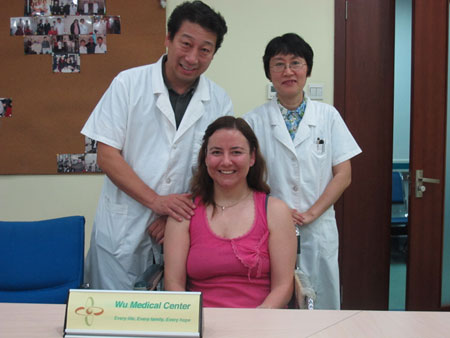
(Download the Windows Media Player Firefox Plugin if you are using Firefox browser.
To know more,Please read Using the Windows Media Player plugin with Firefox.)
